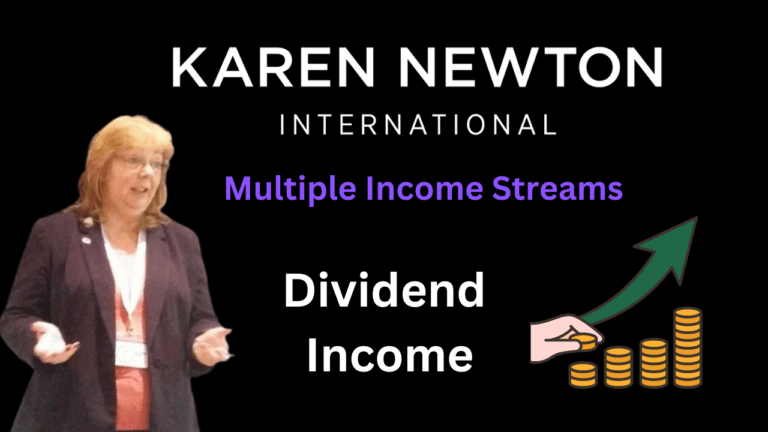Property Investing With Lease Options
Lease options have been a strategic tool in property acquisition for decades, allowing investors to control properties without the need for large upfront capital or mortgage approval. This approach has been widely used by businesses, developers, and savvy investors to secure assets and generate income while deferring full ownership to a later date.
Table of Contents
- A Brief History of Lease Options
- What is a Lease Option?
- How Lease Options Work: Control and Earn
- The Option to Buy at an Agreed Price
- How Lease Options Improve Mortgage Accessibility
- Other Benefits of Lease Options
- Frequently Asked Questions (FAQs)
- Conclusion
A Brief History of Lease Options
Lease options are not a new concept. They have been used in real estate transactions for over a century, and their application extends beyond just individual investors. Large corporations, particularly supermarkets and property developers, have utilized lease options as a way to secure land while awaiting planning permission.
For example, a supermarket chain might identify a prime location for a future store but wait until planning approval is granted before committing to a full purchase. By using a lease option, they can control the land, preventing competitors from acquiring it, while they navigate the bureaucratic processes required for construction.
Similarly, property developers frequently use lease options to secure land at today’s price while they seek planning permission or funding. If the approval comes through, they can exercise the option and proceed with development. If not, they can walk away without the obligation to buy, limiting their financial risk.
What is a Lease Option?
A lease option is a legally binding agreement between a property owner (landlord) and a tenant (investor), granting the tenant the right to buy the property at a fixed price within a specified period. This agreement typically consists of two parts:
- The Lease Agreement – This allows the investor to rent and control the property, often with the ability to sublet and generate income.
- The Option Agreement – This gives the investor the exclusive right (but not the obligation) to purchase the property at a pre-agreed price before the option period expires.
This strategy is particularly beneficial for investors who may not yet qualify for a mortgage but anticipate their financial position improving in the future.
How Lease Options Work: Control and Earn
One of the biggest advantages of lease options is the ability to control a property and earn an income from it without having to purchase it outright.
For instance, an investor might negotiate a lease option agreement where they pay the property owner a small option fee (sometimes as little as £1) and agree to monthly payments that cover the owner’s mortgage or expenses. The investor can then rent out the property for a higher amount, earning a profit on the difference.
This setup allows the investor to build cash flow while also benefiting from potential capital appreciation, as the purchase price is fixed at today’s market value but will likely increase over time.
The Option to Buy at an Agreed Price
A key feature of lease options is the ability to purchase the property at a pre-agreed price, regardless of how much the market value increases during the option period. This makes it a powerful tool for investors looking to lock in a good deal while mitigating risk.
For example, an investor secures a lease option on a property valued at £200,000, with an agreed purchase price of £220,000 in five years. If property prices rise and the home is worth £260,000 at the time of purchase, the investor gains £40,000 in equity immediately upon exercising the option.
This built-in equity can make securing a mortgage much easier, as lenders view properties with strong Loan-to-Value (LTV) ratios more favorably.
How Lease Options Improve Mortgage Accessibility
One of the biggest hurdles for property investors is obtaining mortgage financing, especially if they have a limited deposit or less-than-perfect credit. Lease options help circumvent this challenge by allowing investors to control and improve a property before applying for a mortgage.
As property values increase, the LTV ratio improves, making it easier to secure a mortgage at favorable terms. LTV is calculated using the formula:
LTV = (Loan Amount / Property Value) x 100
Let’s consider two scenarios:
Scenario 1: Traditional Purchase with a 10% Deposit
- Property Price: £200,000
- Deposit: £20,000 (10%)
- Loan Required: £180,000
- LTV: 90%
In this case, lenders may view the mortgage as high risk, requiring higher interest rates or additional security.
Scenario 2: Lease Option Purchase After Five Years
- Agreed Purchase Price: £220,000
- New Property Value: £260,000
- Loan Required: £220,000
- LTV: 84.6%
With an LTV of under 85%, the investor may have access to better mortgage rates and higher chances of approval compared to the 90% LTV scenario. Additionally, if they have saved money from rental profits during the lease period, they might contribute a larger deposit, further lowering the LTV.
Other Benefits of Lease Options
1. Low Upfront Investment
Lease options require minimal upfront capital, making them an accessible strategy for investors with limited funds. Unlike traditional purchases that require a significant deposit, lease options often involve a small option fee and monthly payments that can be covered by rental income.
2. Flexibility and Reduced Risk
Investors are not obligated to buy the property at the end of the option term. If the market declines or the investment no longer aligns with their goals, they can walk away with minimal financial loss.
3. Potential for No Mortgage Required
If an investor builds enough equity in the property and secures alternative funding (such as a private investor or joint venture partner), they may be able to purchase outright without needing a traditional mortgage.
4. Ability to Add Value
During the lease period, investors can improve the property (with the owner’s agreement), increasing its market value and making it an even more attractive investment.
Frequently Asked Questions (FAQs)
1. Is a lease option the same as rent-to-own?
No, a lease option gives the tenant the option to buy, but they are not obligated to do so. Rent-to-own agreements often require the tenant to purchase the property at the end of the lease period.
2. Do I need a large deposit for a lease option?
No, lease options typically require a small option fee, which can be as little as £1, rather than a traditional large deposit.
3. Can I sell a lease option contract?
Yes, many investors sell lease option agreements to other buyers for a profit, especially if the property has increased in value.
4. What happens if the property owner changes their mind?
If the agreement is legally binding and properly structured, the property owner cannot back out without potential legal consequences.
5. Are lease options legal in all countries?
Lease options are legal in many places, but specific regulations vary. It’s important to consult a property lawyer before entering into a lease option agreement.
Conclusion
Lease options are a powerful property investment strategy, allowing investors to control, earn from, and eventually purchase properties with minimal upfront investment. They have been used for decades by large corporations and developers to secure valuable real estate while waiting for planning approvals, and they provide a similar advantage for individual investors looking to grow their portfolio.
With the ability to lock in today’s prices, generate cash flow, and improve mortgage accessibility through lower LTV ratios, lease options offer a smart and flexible approach to property investment. Whether you are a beginner or a seasoned investor, understanding and utilizing lease options can be a game-changer in your property investment journey.

Karen Newton is a Business and Wealth Strategist, 3x International Bestselling Author, and founder of Karen Newton International. She combines practical experience with AI-Powered Entrepreneurship to help smart entrepreneurs build online income, invest strategically, and create long-term wealth through business growth, investments and joint ventures.






